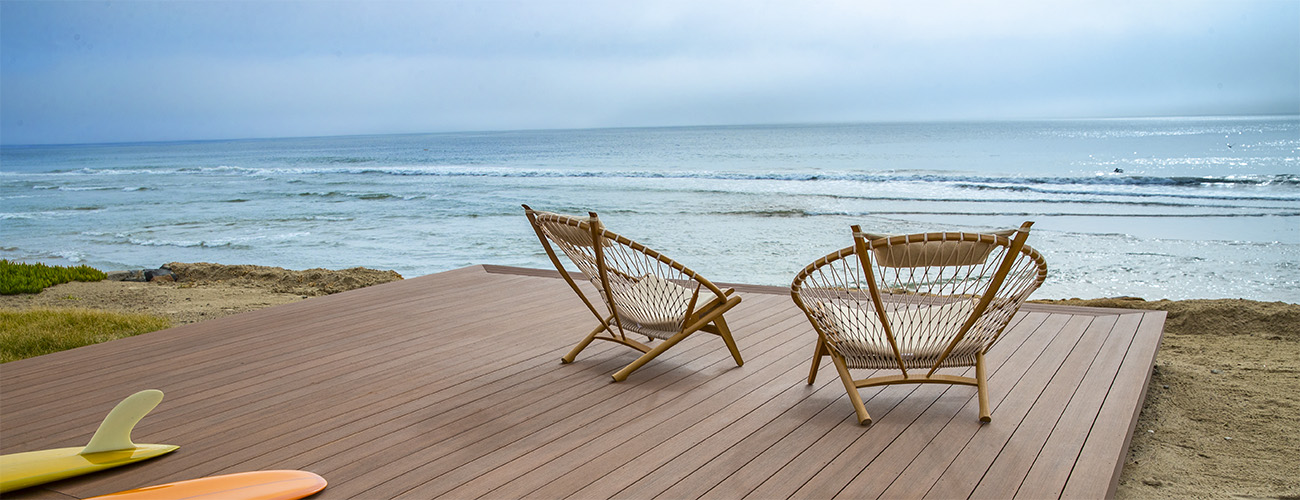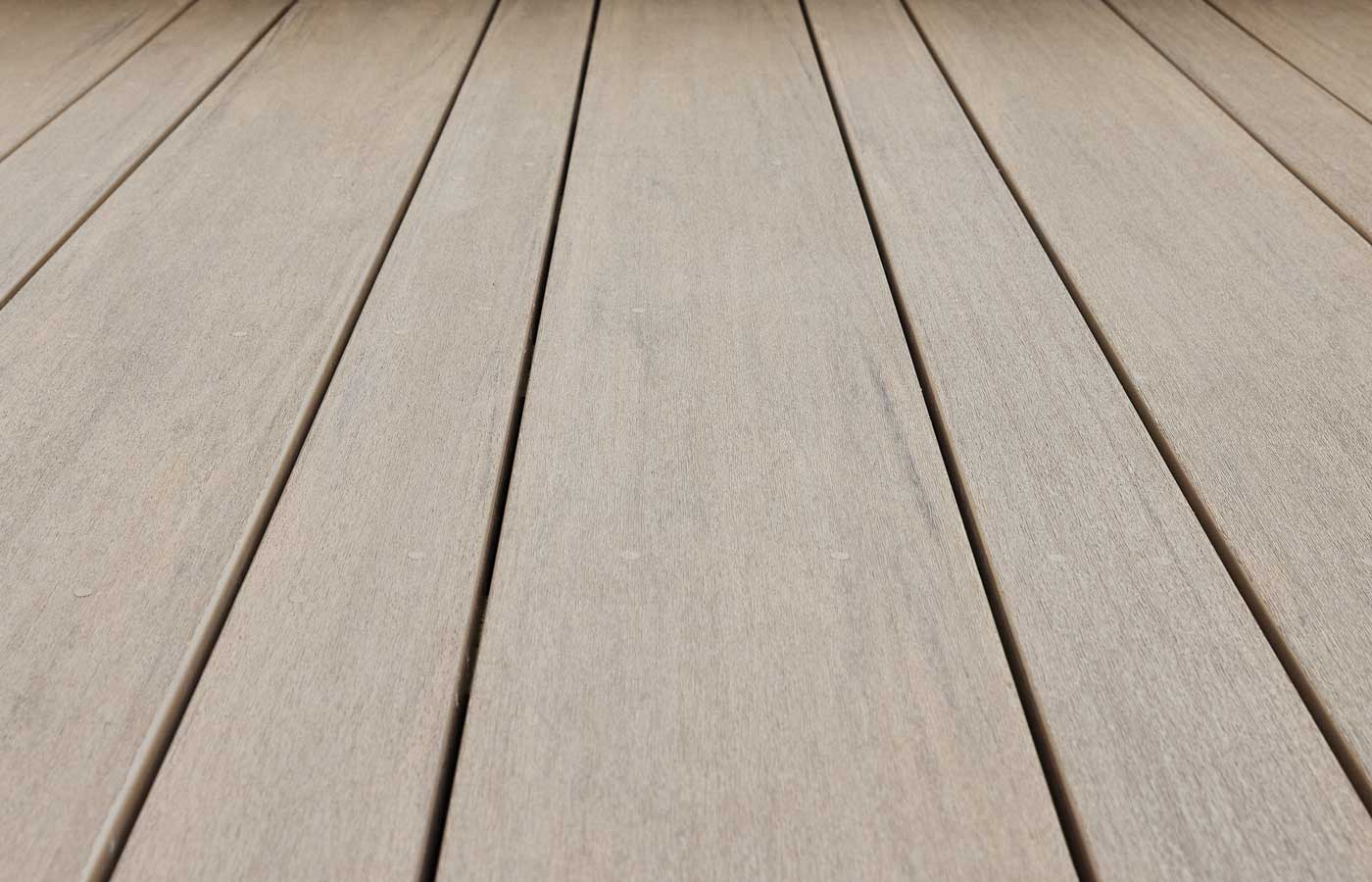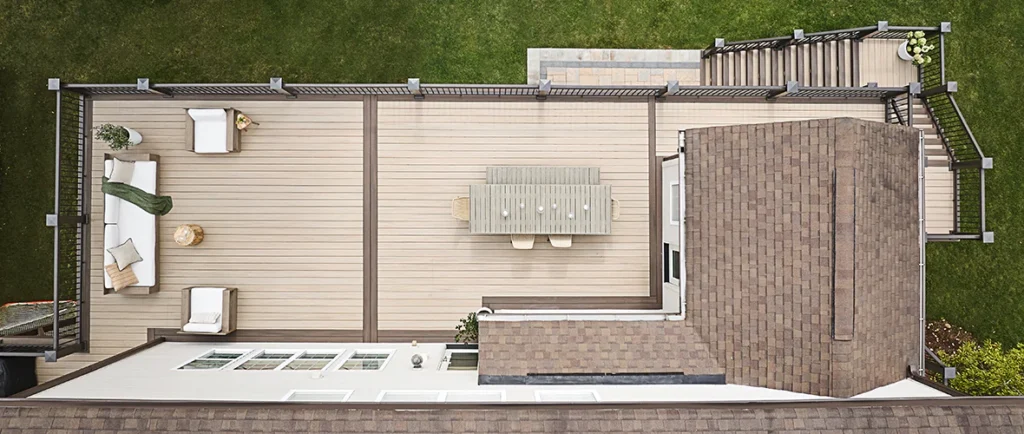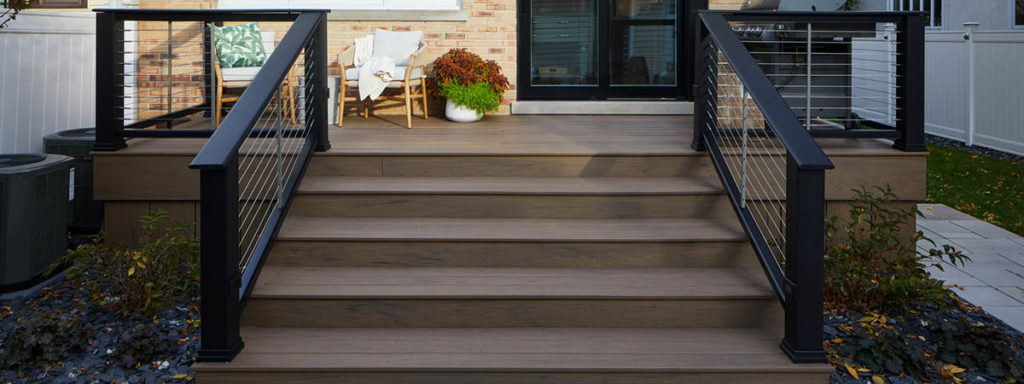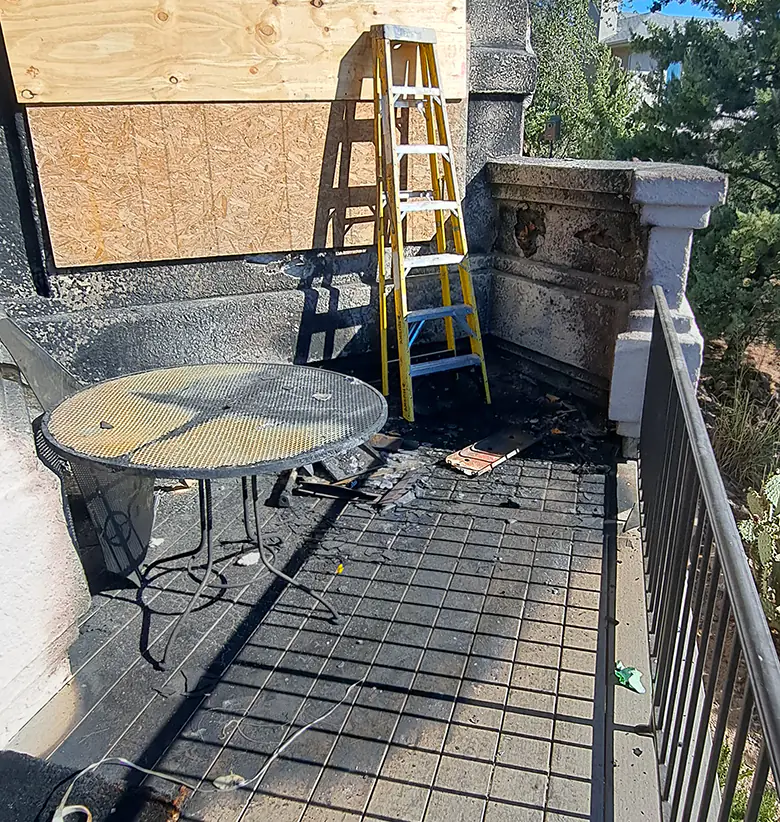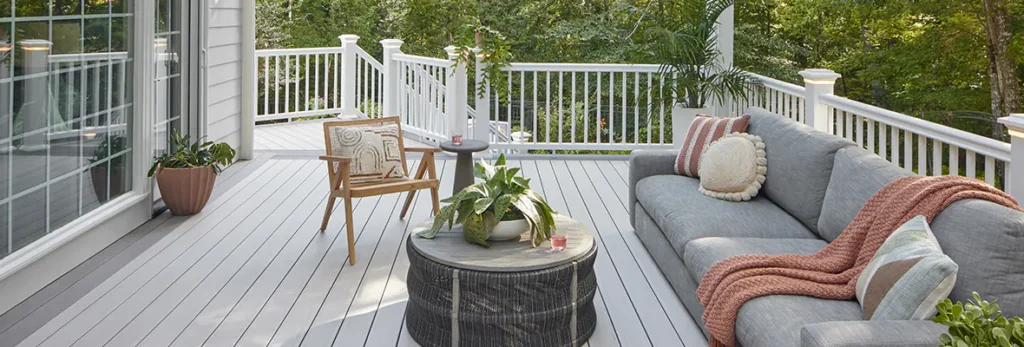Should you worry about standing water on composite deck boards? In short, no.
Standing water on composite deck boards will not affect your TimberTech® capped polymer or capped composite deck boards the way it would traditional wood. TimberTech decking is designed to be water-resistant, so there’s no need to worry about mold, mildew, or rot associated with traditional wood.
Why Is Standing Water on a Wood Deck an Issue?
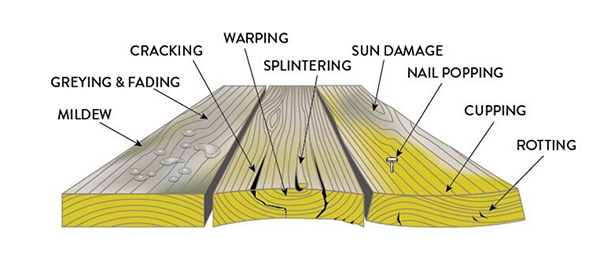
Standing water on a wood deck isn’t just unsightly or a slip hazard — moisture is traditional wood’s worst enemy. When moisture invades the deck boards, it will either grow mildew or UV rays will cause it to fully or partially evaporate — but your problems won’t. The expansion and contraction caused by evaporating moisture can lead to issues like those shown in the photo.
How TimberTech Decking Protects Against Water Damage
Traditional Wood
Mold, mildew, and rot need two things to survive: moisture and organic material to feed on. Porous and made of organic material, even pressure-treated wood offers little protection from — and ample food for — erosion agents.
TimberTech Decking
TimberTech capped polymer and capped composite deck boards boast proprietary capping technology made from 100% synthetic material, making them an ideal all-weather decking choice. Zero organic material in the cap means mold, mildew, and rot have nothing to feed on.
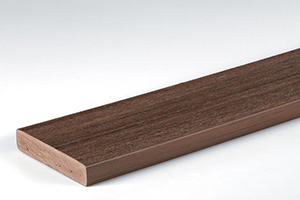
TimberTech® AZEK® Decking
Alloy Armour Technology® in the cap of TimberTech AZEK® deck boards delivers superior protection from moisture penetration. Since TimberTech AZEK capped polymer decking is made from fully synthetic material from core to cap, it offers the highest level of moisture resistance.
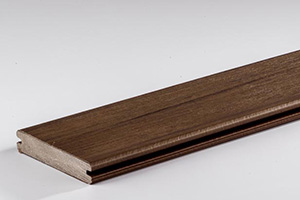
TimberTech PRO® Decking
Mold Guard Technology® protects our TimberTech PRO® composite decking by locking out moisture on all four sides of each board — including in the grooves of the grooved boards.
What Should I Do With Standing Water on Composite Deck Boards?
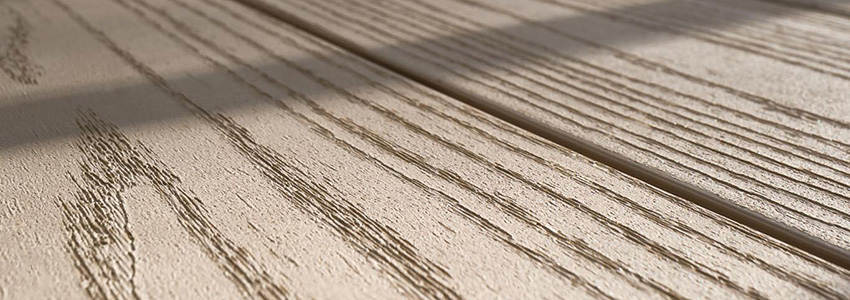
While standing water can’t harm your composite deck boards, it is still a good idea to remove the water for a couple of reasons:
- Water on deck boards can cause your deck surface to become a bit slick.
- Standing water can affect the vulnerable deck substructure which is made of traditional wood.
If you have standing water on your composite deck, remove the water by:
- Drying your deck with a rubber or plastic squeegee, mop, or towels, especially in high-traffic areas to avoid slips and falls.
During Your Build: Protect Your Deck Substructure From Water Damage
Deck substructures are often made with traditional wood, which is highly susceptible to water damage — even if it is pressure-treated.
If you’re in the midst of building your deck, you can take precautions now that will ensure your deck’s traditional wooden substructure lasts as long as your capped composite or capped polymer deck boards.
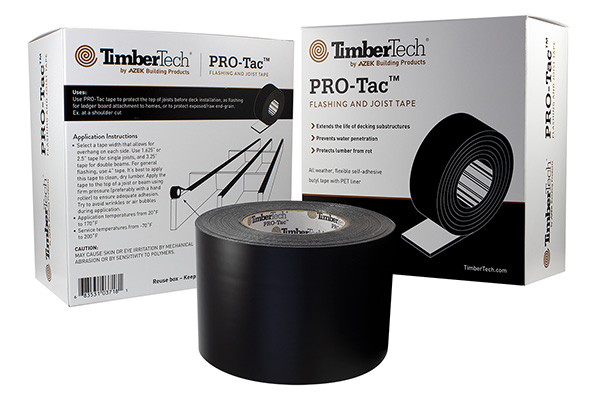
How to Protect Your Substructure
Protect your deck’s substructure from water damage with TimberTech PRO-Tac™ Flashing and Joist Tape.
Applying deck joist flashing tape to the tops of your joists and as flashing for your ledger board before laying your deck boards:
- Prevents moisture from penetrating the traditional wood of your substructure.
- Increases the lifespan of your deck’s substructure.
- Saves on repair/replacement costs over time.
Even with joist tape protecting your substructure, it’s still good practice to ensure your deck remains as water-tight and in the best condition possible. Stay ahead of any issues with a temporary winter deck enclosure and by:
- Remove standing water and snow regularly.
- Inspect your deck and substructure annually.
- Clean your deck routinely, even in winter.
TimberTech decking is built to resist moisture damage, so standing water on composite deck boards is nothing to worry about. Explore our moisture-resistant deck boards for yourself by ordering up to four free samples today.
